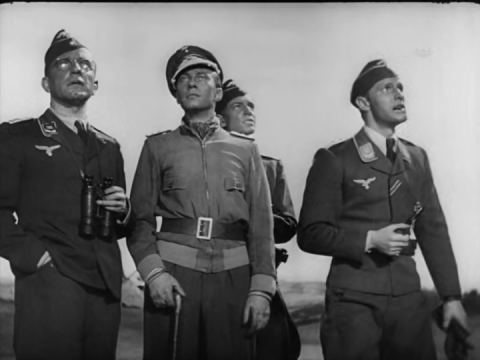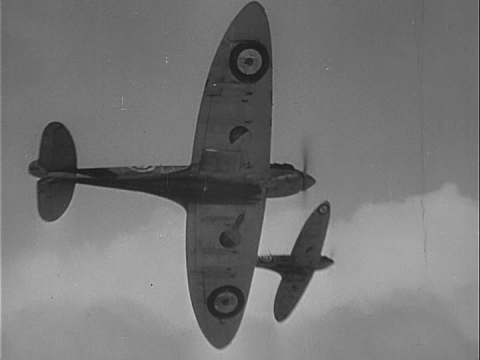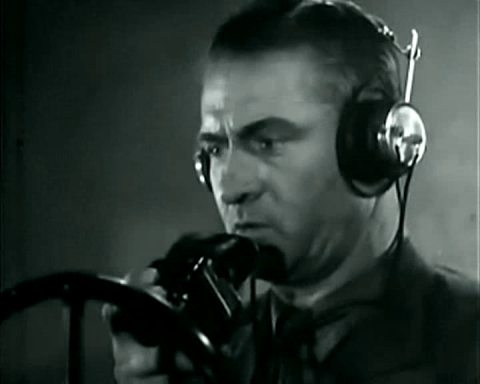I have had an almost lifelong fascination for aviation movies. When I was a kid, I dreamt of becoming a pilot, and I guess the best aviation movies sort of made that dream seem true for a brief time. For several years now, I have wanted to see a number of German World War II propaganda films on that topic, and in particular the film Stukas, about the infamous dive bombers that totally dominated the sky during the successful Blitz in the early parts of the war. I was therefore very excited to find, at last, a good copy of the film at the Internet Archive some time ago, and my expectations were completely met.
Set during the Battle of France, which had ended only about a year before the film’s release, the film depicts the joys and hardships of a Luftwaffe group of Stuka pilots. The need of constantly being on the alert and the sorrows of losing dear friends in battle, but also the strong comradeship and the sense of accomplishment after a successful mission.
The film is well paced for the most part. In the beginning the constant victorious missions over French territory may feel a bit repetitive at times, and the final segment of the film is too long and drawn out. But these are minor quibbles over a film that, in spite of the subject matter, is overall very enjoyable.
The choice of Stukas was not coincidental. It was one of Germany’s most important and efficient weapons during the early parts of the war. Later, however, such as during the Battle of Britain, the Stukas would suffer considerably when they no longer could enjoy the luxury of full air superiority and therefore much less fighter support. This knowledge gives an unintended ironic twist to the final scenes, where the brave pilots fly off towards England, singing a gay patriotic song (yes, really!).
The copy I downloaded appears to be spliced together from at least two copies of vastly varying technical quality. Fortunately, the larger part of the film is in good shape, but during some short scenes, sound and image are barely tolerable.
This film is best enjoyed if you can stomach some pretty thick German propaganda, but if you do you will be treated with a number of effective and often spectacular flight scenes. As far as I know, no flying Stukas exist anywhere in the world, so films like this one are the only chance to see actual Stukas in action. This is not to be missed if you are an aviation history nerd!
Stukas
Download link
Year: 1941
Language: German (English subtitles)
Running time: 1 h 38 min
Director: Karl Ritter
Stars: Carl Raddatz
Image quality: Good
Resolution: Medium (720×540)
Sound quality: Acceptable
Best file format: DivX (903 M)



















